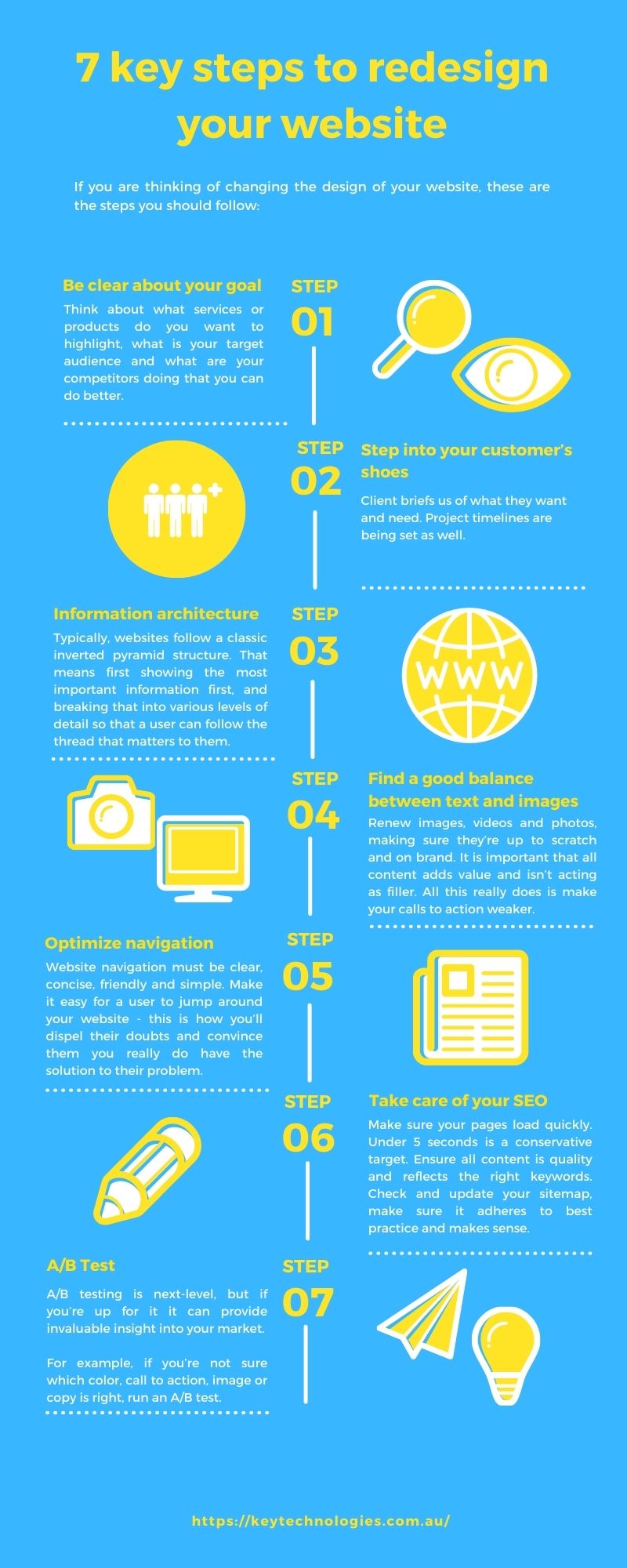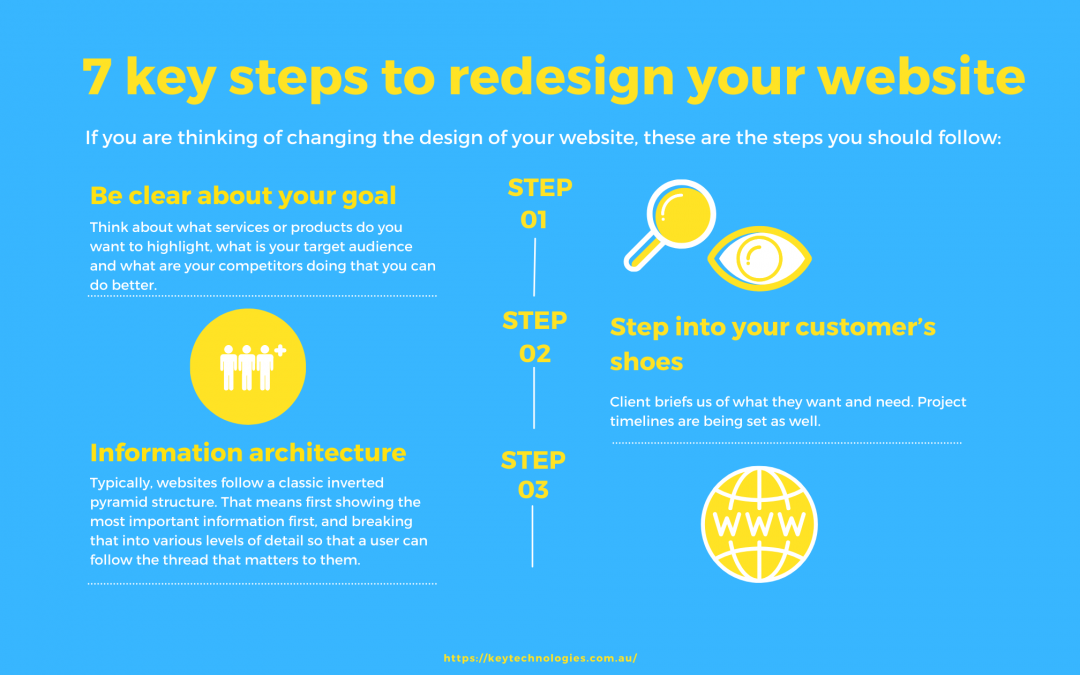If you are thinking about changing your digital strategy, your actions may include the redesign of your website. You’re probably asking yourself whether it makes sense to invest money in redesigning your website. Will this help you attract new customers? What you must do so that people spend more time on the site?
Your website is your digital showcase. Having a good design and easy navigation will not only let customers reach you, but it will also help you position your brand as one that cares about its customers and is on top of usability trends. In this article, we give you to consider as you think about your website.
1. SIMPLE AND MINIMAL
As a rule, when someone visits your website, they may not spend more than a few minutes browsing it – often as short as a few, seconds. At this time your client must find what they are looking for. So, if your main page is saturated with filler text. Take some time to consider how your key value proposition. Could be better highlighted.
Similarly, think about what you want people to do on this page. This is your call to action. Many websites don’t have a clear call to action or have many conflicting ones, meaning they will be confused. Think about what the one most important thing you want your potential customer to do is.
2. EASY TO CONTACT
That could be as simple as making contact. Whether your business is B2B or B2C, your customer must find an easy way to get in touch with you. That is why tools such as chatbots or calls to action that led to contact pages or phone/email details will give the customer the confidence to do that.
3. COMPLETELY RESPONSIVE
Times have changed and now people will visit your website with their mobile devices. Is yours ready for this? If you haven’t touched it in a while, it may not be. Test it and find out.
This is why it is super important your new design follows a responsive structure and is fully adaptable to the mobile experience. Any website needs to work brilliantly no matter the device used.
In short, if your website is “not responsive”, your competition already has a significant advantage, as Google now gives precedence to websites that.
A great way to check how your web page looks on different devices is responsinator. If you want to do a quick check, Mobile Friendly will also give you the gist of the mobile experience you provide.
4. SPEED DOES MATTER
Website load speed is a key factor in various aspects of your digital presence, including SEO. If your website is slow, there is a good chance it’s either poorly built or using a slow hosting platform, so maybe it’s time for a change. Internet users are not patient: they expect immediate results, just at the click of a button, so we’d better be giving it to them.
If you want to check the speed of your website, you can use Google’s PageSpeed Insights or GTmetrix.
5. Build and follow a brand
It is important that the visuals, whether video, photography, or graphics, reflect the personality of your business. If one thing gives the impression that you have no brand, it’s inconsistent visual. In general, most people want to seem “cool” or new things. Users who are visiting your website are doing so to obtain more information before making a purchase decision. Whatever that decision, your visual resources can make your brand more human and build a real connection with the user.
To have a visually attractive website, you do not need to spend a lot of money or resort to boring stock images. Photos from your own phone will often do, and customers may appreciate the personal approach. Consider bringing in a professional photographer to capture your workspace.
Don’t be afraid to show your office as it is, your staff as they are, or your products (used by real people). These will have manifold more impact than a stock photo that any company around the world could use, and customers can tell.
6. UPDATE YOUR CONTENT
The internet is full of content that used to be relevant, but as the years went on has become out of date. Your content must get updated to suit the era. Businesses change over time too, so it’s even more important that your content is adapted to your current customers by reflecting what matters to them.
For example, imagine that you create a giving SEO positioning advice. Some of these techniques won’t change, but others will become outdated as search engines change their methods. New techniques will have also emerged.
If you don’t update that content, it becomes irrelevant or even misleading. Google and other engines value this negatively, so you’re your website will lose its hard-won search engine ranking and ultimately provide you fewer leads, and revenue.
You must also bear in mind that your content needs, internal and external links, proper use of keywords, etc. If you are missing these elements, it’s time to update it. Link’s a change or disappears over time, so even if you do have them, it’s worth making sure they’re up to date!
7. SEO OPTIMIZATION
One of the most constant and lasting marketing strategies that you will have is your SEO strategy. It is very important to work on your keywords and adapt the content of your website to your SEO strategy. This will bring you organic (free!) traffic and improve your position with the search engine, otherwise known as your ranking. This is how you get to that prized ‘page one’.
Without a doubt, the SEO optimization of your website is vital for it to be a productive part of your marketing strategy.
Here’s a breakdown of the key elements of SEO:
- The loading speed of the pages.
- The use of friendly (human-readable) URLs.
- The inclusion of metadata, especially titles and, descriptions.
- The addition of an intuitive and navigable sitemap with content that can be easily indexed in search engines.
- Good site usability is achievable with the redesign of web pages, especially the navigation.
- Optimization and updating of all content.
- Fixing possible broken links (these are seen by the search engines and will drag down your ranking).
Considering these tips, these would be the steps you have to take to meet your goals when redesigning your website:
1. Be clear about your goal
Your first step will be to work on your goals. Ask yourself a few questions: What services or products do you want to highlight. What is your target audience? Which pages get the most visitors currently – are these the right ones? What are your competitors doing that you can do better?
2. Step into your customer’s shoes
Now that you’ve thought about what customers use your website for, consider how they’re going to use it. Is it easy for them to visit pages with the information they’re looking for?
3. Information architecture
This will lead you to a review of your information architecture. Typically, websites, follow a classic inverted pyramid structure. That means first showing the most important information first and breaking that into various levels of detail so that a user can follow the thread that matters to them.
4. Find a balance between text and images
Renew images, videos, and photos, making sure they’re up to scratch and on-brand. It is important that all content adds value and isn’t acting as filler. All this really does is make your calls to action weaker.
If the visuals aren’t consistent, it might be better to not have any at all, to protect the integrity of your brand identity.
Remember, less is more on a website. Always look at content from the perspective of your customer. Is it helping?
5. Optimize navigation
Website navigation must be clear, concise, friendly, and simple. Make it easy for a user to jump around your website is how you’ll doubt and convince them you really do have the solution to their problem.
6. Take care of your SEO
Make sure your pages load quickly. Under 5 seconds is a conservative target. Ensure all content is quality and reflects the right keywords. Check and update your sitemap, and make sure it adheres to best practices and makes sense. Ensure all pages have the right metadata in their titles, tags, and descriptions. Make sure URLs are human-readable (but ensure they redirect to new URLs if you change them).
7. A/B Test
A/B testing is next-level, but if you’re up for it it can provide invaluable insight into your market.
For example, if you’re not sure which colour, call to action, image or copy is right, run an A/B test. You can run these as long as you like and collect data that will help you understand your customers better and optimize the website for them.

If you’re still not sure…
If after reading this article you’re still not sure what to do with your website, please that, redesigning your website is to invest in your most important digital asset.
In essence, a website is a communication tool. If your potential customers cannot communicate with you through your site, you’re missing out on revenue.
We’re here to help. If you need a professional eye on your site, we’d be happy to take a look and let you know what needs attention.

